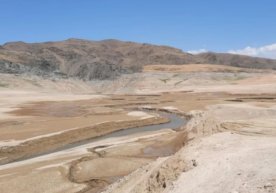
In the Italian city of Manduria, construction workers were working on creating and installing a sewerage system when they encountered an ancient burial site more than 2300 years old. Fox News news agency reported this.
The tomb dates back to the 4th century BC and is said to belong to the Messaphian people who lived long before the Romans came to this area. The Messapans remained in history as a people known for their skillful fortress construction and special burial customs, incorporating the influence of both local and Hellenistic architectural styles.
Archaeologists note that the discovered grave was organized as a small burial complex and consisted of two separate rooms. By examining the entrance, specialists identified fragments of red decoration with white plaster strips stretching along the walls. In the interior, remnants of rich painting and architectural styles, including two-layered doorprints covered with red plaster, have been preserved.
Inside the first room, a collection of rich pottery belonging to the 4th century BC - vases, oil lamps, jugs, and saucers - was found. Archaeologists noticed four rectangular hollows on the floor - these hollows likely served as supports for the burial bed.
The second room, though sealed, unfortunately, was found to have been completely looted in ancient times. Researchers were able to find only the Roman Republican dinar used. This find indicates that the necropolis was also used during the Roman period, that is, the Roman economic and cultural influence continued in the region.
Official sources say that the area of the grave left a trace with "signs of ancient destruction." Apparently, the robbers broke through the walls to reach the neighboring graves. At the same time, the find is of great historical and cultural value, allowing for a deeper and more detailed understanding of messaphian burial rites in the Hellenistic period.
Currently, specialists are creating a complete 3D model of the tomb. This digital model is presented to the general public online and provides an opportunity to study and evaluate a historically significant object using modern technologies.
Read “Zamin” on Telegram!Users of Меҳмон are not allowed to comment this publication.













